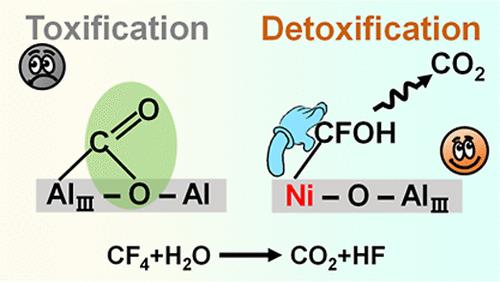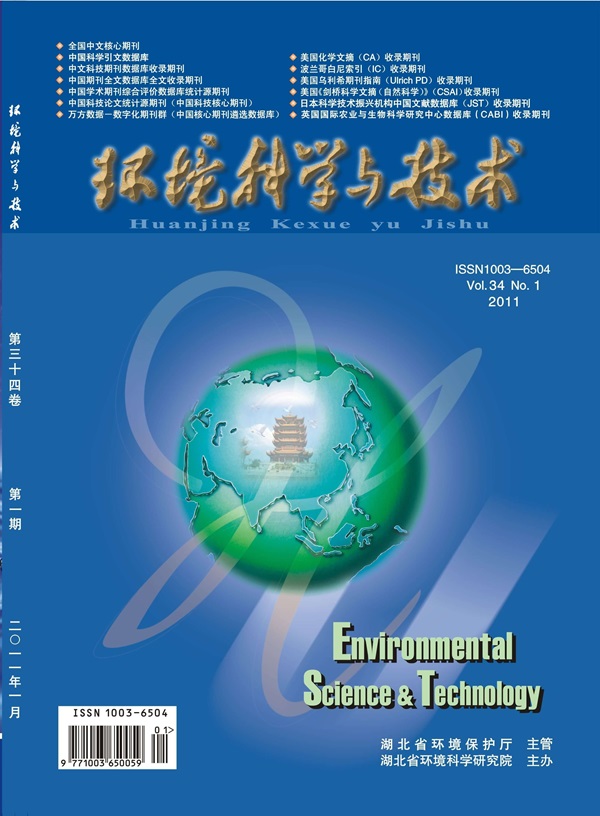Detoxification of Carbonaceous Species for Efficient Perfluorocarbon Hydrolysis
IF 10.8
1区 环境科学与生态学
Q1 ENGINEERING, ENVIRONMENTAL
引用次数: 0
Abstract
Thermocatalytic hydrolysis of perfluorocarbons (PFCs) is a promising way to reduce their emission and environmental hazards. However, hydrolysis of PFCs, such as CF4, usually suffers from a drastic activity decline during the induction period, which seriously hinders its conversion performances and practical applications. In this work, we found that the carbonaceous (*COO) species account for the activity decline during the induction period, and their detoxification could promote PFC hydrolysis at low temperature. In situ diffuse reflectance infrared Fourier transform spectroscopy (DRIFTS) shows that the poisoning signals belong to *COO species on the surface of γ-Al2O3 during CF4 catalytic hydrolysis. The adsorption configuration of *CFOH intermediate is the key to the formation of poisoned *COO species. By introducing Ni sites with strong *CFOH adsorption capacity into γ-Al2O3, the *CFOH at the Al active site can transfer to the adjacent Ni site to avoid the formation of poisoned *COO species, which was proved by DRIFTS and density functional theory. As a result, the optimal 0.1Ni/γ-Al2O3 (10% Ni loaded γ-Al2O3) catalyst achieved 100% CF4 conversion without any activity decline at 570 °C for over 300 h, much higher than that of ∼55% CF4 conversion on pure γ-Al2O3 at the same temperature. This work provides new insights into the detoxification of thermocatalytic PFC hydrolysis at low temperatures.

求助全文
约1分钟内获得全文
求助全文
来源期刊

环境科学与技术
环境科学-工程:环境
CiteScore
17.50
自引率
9.60%
发文量
12359
审稿时长
2.8 months
期刊介绍:
Environmental Science & Technology (ES&T) is a co-sponsored academic and technical magazine by the Hubei Provincial Environmental Protection Bureau and the Hubei Provincial Academy of Environmental Sciences.
Environmental Science & Technology (ES&T) holds the status of Chinese core journals, scientific papers source journals of China, Chinese Science Citation Database source journals, and Chinese Academic Journal Comprehensive Evaluation Database source journals. This publication focuses on the academic field of environmental protection, featuring articles related to environmental protection and technical advancements.
 求助内容:
求助内容: 应助结果提醒方式:
应助结果提醒方式:


